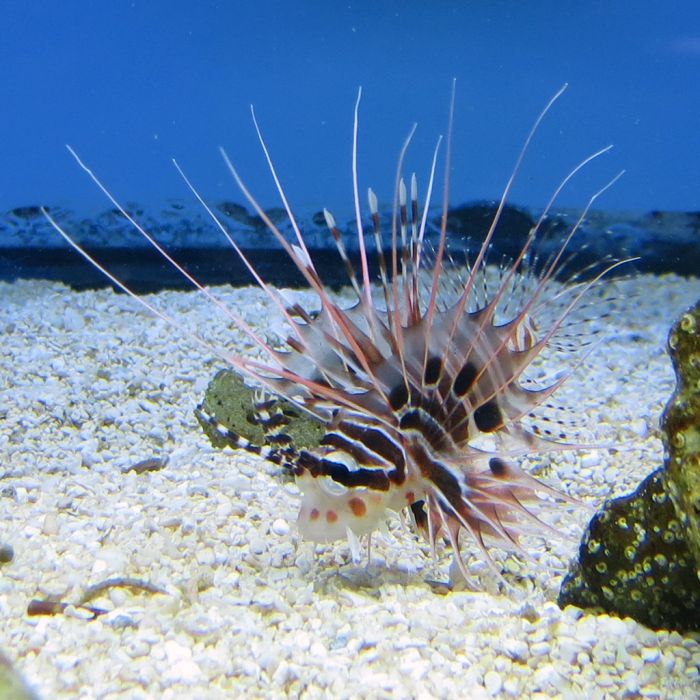Antennata Lionfish (Asia Pacific)
As the ocean's most spectacular ambush predators, it is no wonder lionfish are so popular. Their huge fins are used to confuse and herd smaller animals so the lionfish can swallow them whole with their huge mouths. They greedily eat all shrimp many crabs, and any small or slender bodied fish. They do not harm corals, sponges, macroalgae or snails. They generally ignore anything that cannot be eaten. Best tank mates are large bodied fish such as tangs, angelfish, groupers, triggerfish and puffers. Sometimes the slow moving lionfish may become a target for aggressive fish. If added at the same time, and if of similar size, several lionfish may be kept together as long as there is at least one private refuge in the rocks for each fish. Most species are imported from Bali.
The tips of the lionfish's fins contain a toxin that can cause extremely painful wounds. The sting may be as mild as a hornet sting or much worse- great care should be taken when handling the lionfish, and children should never be allowed to put their fingers in the water with the fish.
Lionfish feed by sucking in their food whole into their enormous mouths. They are carnivores and should be fed at least once every two or three days a high quality diet of krill, silversides and chopped seafood. They are heavy feeders and thus strong filtration is necessary. Live food may initially be necessary, and the fish trained to eat off a feeding stick.
The Antennata lionfish is an incredible beauty sporting long white rays on its pectoral fins. A spectacular contrast is made between the spines and the alternating milky white and earthy brown to rust red bands running over the fish's body. Its face is white with a dark stripe running through each eye and extending into long 'horns'. Its fins are finely banded light and dark, and it can be distinguished from similar species because of the dark spots on its pectoral fins. Males and females are visually identical. It grows to 8 inches; we recommend an aquarium of at least 50 gallons.
















